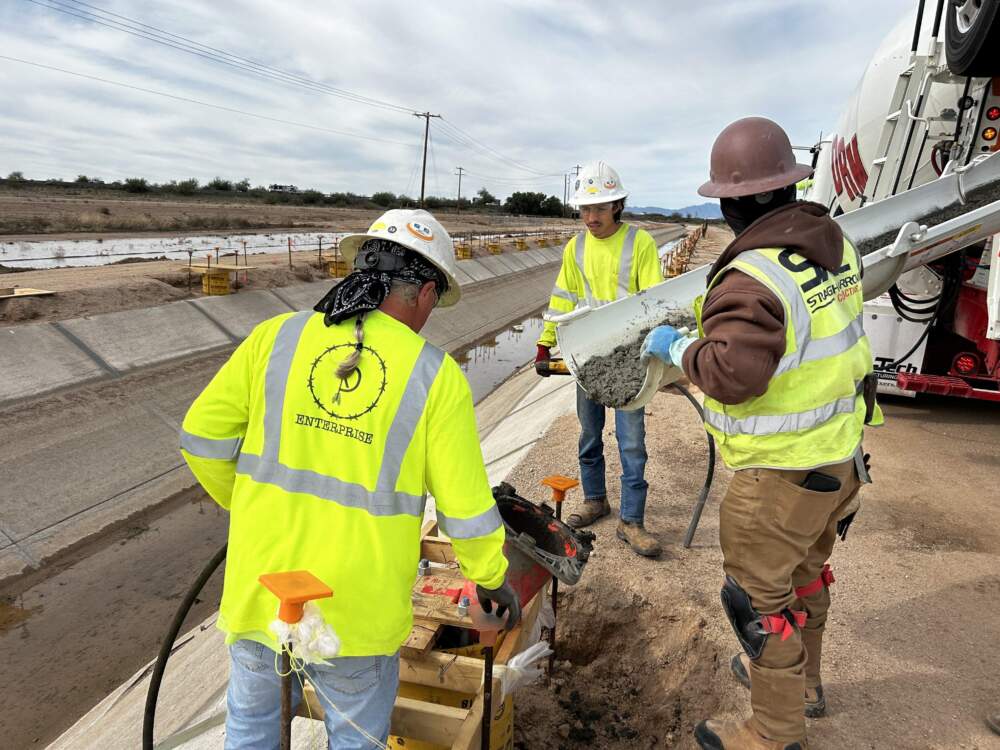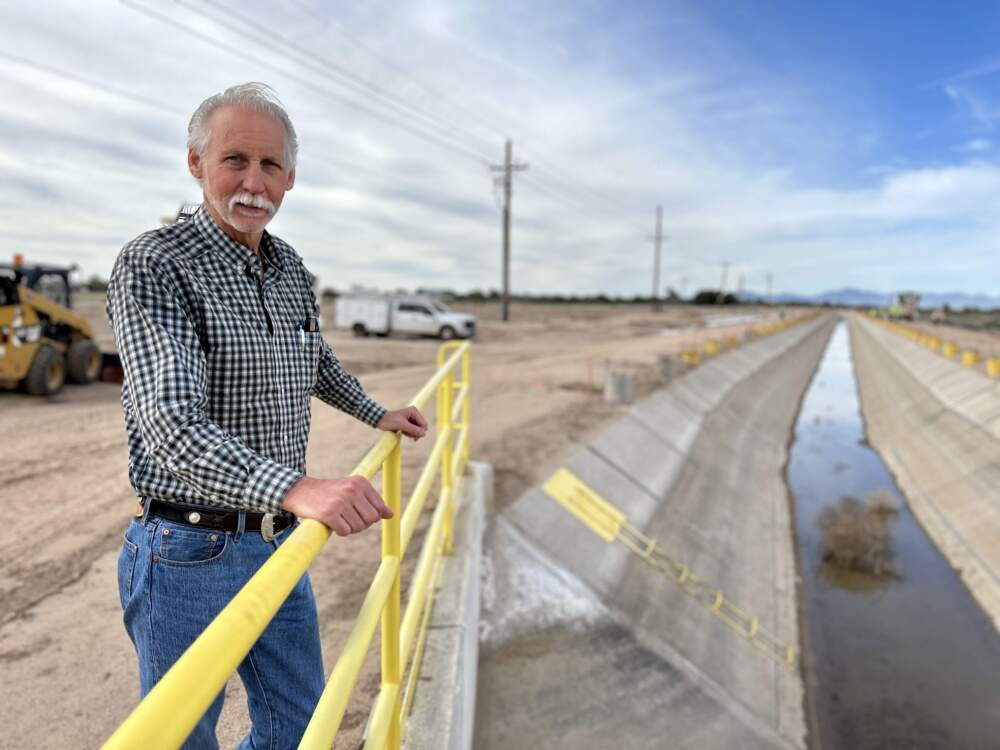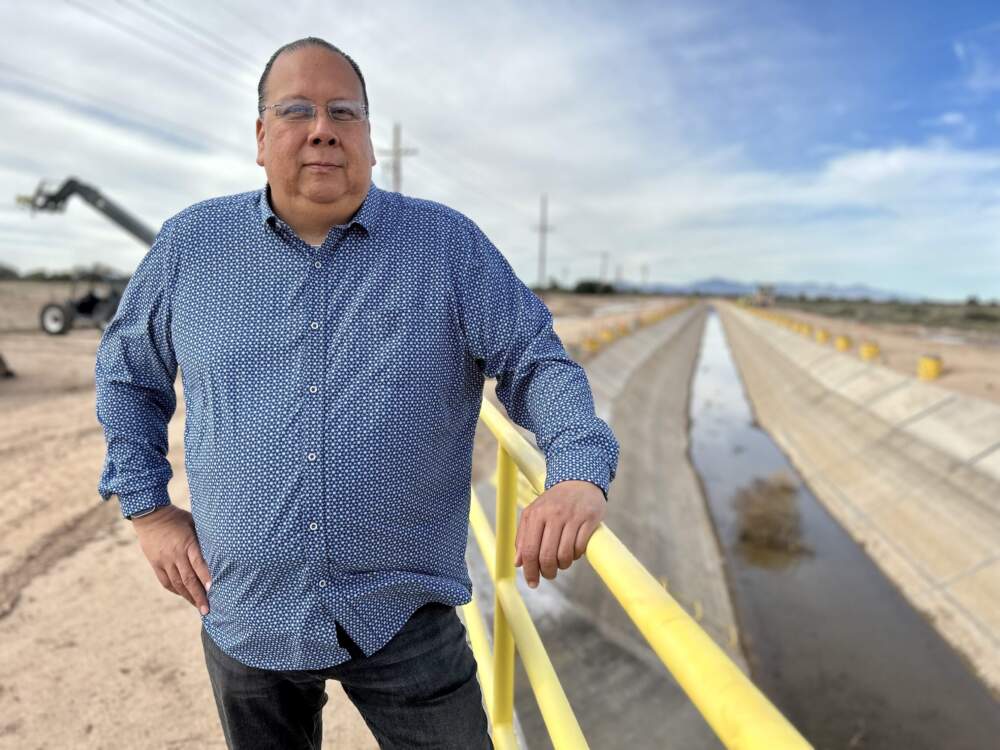Advertisement
Arizona tribe first to span canals with solar panels
Resume
For the first time in the United States, a tribe in Arizona is building a solar farm over an irrigation canal to produce clean energy and save water at a time of unrelenting drought.
The Gila River Indian Community has broken ground on a project to put solar panels over nearly 3,000 feet of the Casa Blanca canal south of Phoenix. It’s one phase of a pilot project designed to eventually help the tribe reach its goal of using 100% renewable power.
The idea is modeled after a similar project in India, says David DeJong, director of the Pima-Maricopa Irrigation Project.
“Nobody’s ever done this before,” he says.

The Turlock Irrigation District in California’s Central Valley is expected to start a project of its own soon.
DeJong says money from the Inflation Reduction Act funded the solar farm, and it will eventually produce enough electricity to power several thousand homes. Putting the panels over the irrigation canal will also cast a shadow on the water to prevent evaporation.
“We’re pretty confident we’re going to be able to reduce evaporative losses by at least 50%, possibly by as high as two-thirds,” DeJong says
On a relatively small stretch of canal, that amounts to about 10 acre-feet of water a year — enough water to irrigate about two acres of land, says DeJong.
The sprawling city of Phoenix and its surrounding suburbs would hardly exist without a complex network of artificial waterways. Hundreds of miles of canals link farms and homes to several major rivers. But climate change is bringing dangerously hotter summers, and hundreds of miles of canals exposed to the unrelenting heat lose nearly 5% of their water to evaporation, according to one estimate from the Central Arizona Project.
Covering the canals to prevent evaporation would have quadrupled the cost of a multi-billion dollar project to bring Colorado River water to Central Arizona.
While the tribal solar project won’t make a major dent in the water supply of the drought-stricken West, lessons learned could help other canal operators across Central Arizona launch similar efforts, says Gila River Indian Community Gov. Stephen Roe Lewis.
“This is an existential challenge, not only to our economy but to our very existence,” he says, referring to the tremendous stress that drought and overuse have put on the reservoirs along the Colorado River.

The tribe gets about half of its water from the Colorado River. Last year it volunteered not to use some of the water it was entitled to prop up the levels at Lake Mead.
The ancient Hohokam people first built a system of irrigation canals that brought agriculture to the arid deserts of Arizona. Gov. Roe Lewis says that’s why this project is “deeply personal” to him. As descendants of the Hohokam, his tribe is carrying on the tradition of the early canal builders.
“That’s why I tell our youth — that type of ancient innovation is still in your blood DNA. Do not betray that," Lewis says. "That connection is what we’re harnessing today on this ground, hundreds if not thousands of years later.”
This segment aired on February 19, 2024.
